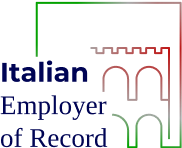16 April 2025
Understanding payroll taxes and employer contributions in Italy
Managing payroll taxes and employer contributions in Italy can be complex, especially for foreign companies unfamiliar with the local regulations. Italy’s payroll system requires employers to withhold income taxes, contribute to social security, and plan for severance payments, all of which add to the total employment costs.
Understanding these obligations for international businesses and HR teams is crucial to ensuring compliance and maintaining a transparent, legally sound payroll structure. This guide breaks down the essential components of payroll taxes in Italy, clarifies employer responsibilities, and highlights how an Italian Employer of Record can simplify compliance for companies without a local entity.
Overview of payroll taxation in Italy
Payroll taxation in Italy involves a layered approach to employee and employer responsibilities, with both parties contributing to the country’s complex social welfare and tax system. The primary goal of the payroll tax framework is to ensure that employees receive their entitled benefits, that the government collects adequate revenue, and businesses maintain compliance with legal standards.
Payroll taxation in Italy comprises multiple components, including income tax (IRPEF), regional and municipal taxes, social security contributions, and other mandatory deductions. Employers are responsible for withholding these amounts from employees’ gross salaries and remitting them to the appropriate authorities.
Breakdown of gross vs. net salary
One of the most important aspects of payroll taxation is understanding the difference between gross salary and net salary:
Gross salary is the total compensation agreed upon in the employment contract before any deductions. It includes the employee’s base pay along with any bonuses, allowances, or other taxable benefits.
Net salary is what the employee takes home after deductions for taxes, social security contributions, and any other mandatory charges. The net salary is the amount in the employee’s bank account.
The gap between gross and net salary can be significant in Italy due to the various mandatory deductions. Employers must ensure that employees receive the correct net amount and make accurate calculations of all the deductions to maintain compliance.
How is employee income tax (IRPEF) calculated?
The Imposta sul Reddito delle Persone Fisiche (IRPEF) is the primary income tax applied to individual earnings in Italy. It is calculated on a progressive scale, meaning the more an employee earns, the higher the rate of tax they pay on income that exceeds certain thresholds. As of the most recent tax rates, the IRPEF brackets are as follows:
- Up to €15,000: 23%
- €15,001–€28,000: 25%
- €28,001–€50,000: 35%
- Over €50,000: 43%
For example, an employee earning €40,000 gross annually would pay:
- 23% on the first €15,000,
- 25% on the portion between €15,001 and €28,000,
- 35% on the remaining €12,000.
The progressive nature of the tax ensures that lower-income earners are taxed at a reduced rate, while higher-income earners contribute proportionally more. Employers are responsible for calculating these amounts, withholding them from employees’ salaries, and transferring them to the Italian tax authorities.
Regional and municipal tax considerations
In addition to the national IRPEF, employees in Italy may also be subject to additional regional and municipal income taxes. These local taxes vary depending on where the employee lives and works:
- Regional income tax (addizionale regionale): Each region in Italy can impose an additional tax rate, usually ranging from 0.7% to 3.3%. This rate is applied to the employee’s taxable income after calculating the IRPEF.
- Municipal income tax (addizionale comunale): Similarly, municipalities can levy their own income tax, typically between 0% and 0.9%. This rate may vary significantly from one city to another.
Both regional and municipal taxes are relatively small compared to IRPEF, but they must still be factored into payroll calculations. Local governments set the exact rates which may change annually, requiring employers to stay updated to ensure accurate deductions.
Withholding obligations for employers
Employers in Italy have significant responsibilities regarding payroll taxation, as they act as intermediaries between the government and the employees. Specifically, employers must:
- Calculate and withhold income taxes: Employers must deduct IRPEF, regional taxes, and municipal taxes directly from employees’ gross salaries. The amounts must be calculated accurately based on current tax rates, thresholds, and exemptions.
- Deduct social security contributions: In addition to income taxes, employers must withhold the employee portion of social security contributions, as well as pay their own employer contributions, to cover pensions, unemployment insurance, and other mandatory social protections.
- File periodic payroll tax returns: Employers must submit regular filings to Italian tax authorities, providing detailed information on all withheld taxes and contributions. This typically involves monthly and annual reporting, including forms that confirm the amounts withheld and paid for each employee.
- Ensure timely payments: It is the employer’s obligation to remit all withheld taxes and contributions on time. Late payments or errors can lead to fines, interest charges, and reputational damage.
By managing these obligations meticulously, employers help ensure that their employees remain compliant with Italian tax law, while also maintaining their own legal standing. For companies unfamiliar with Italy’s payroll system, these obligations can be complex and challenging, making it essential to have accurate processes in place or to partner with experienced local payroll providers or an Employer of Record to handle compliance.
Employer contributions to INPS (social security)
One of the most significant payroll obligations in Italy is the employer’s contribution to the Italian social security system, managed by the National Institute for Social Security (INPS). These contributions fund pensions, unemployment benefits, maternity leave, and other social welfare programs.
Employer contributions are calculated as a percentage of the employee’s gross salary and can range from approximately 30% to over 40%, depending on the sector, employee classification, and collective agreements.
While standard contribution rates apply to most industries, some sectors have unique rules and contribution ceilings. Employers must understand these variations and ensure they accurately calculate the amounts due for each employee. Failing to meet these obligations can result in audits, fines, and reputational damage.
Employee contributions and deductions
In addition to employer contributions, employees are required to contribute to INPS. These contributions are also calculated as a percentage of gross salary, typically around 10%.
Employers are responsible for deducting these amounts from employees’ pay and transferring them to INPS. Ensuring that these deductions are correct is critical for both compliance and maintaining employee trust. Mistakes in these calculations can lead to employee dissatisfaction and potential disputes.
Severance pay (TFR): what employers need to know
Another key element of Italian payroll is Trattamento di Fine Rapporto (TFR), a form of severance pay that accrues throughout the employment period. TFR is calculated monthly as a portion of the employee’s gross salary and set aside by the employer until the employee leaves the company. Upon termination, this accumulated amount is paid out to the employee, providing them with a financial cushion as they transition to new opportunities.
For employers, planning for TFR obligations is essential. It’s not just a one-time payout – it’s an ongoing liability that must be accounted for in payroll budgets. Understanding the calculation formula and ensuring timely accruals will help businesses avoid financial surprises when employees leave.
How to calculate total employment costs in Italy?
When hiring employees in Italy, the gross salary is just the starting point. Employers must factor in all mandatory contributions and obligations to determine employment costs.
For example, consider an employee with a gross annual salary of €40,000. Employer social security contributions might amount to roughly €12,000, and TFR accruals could add another €2,500 to €3,000. In this scenario, the total employment cost would be closer to €55,000 rather than the initial €40,000 gross salary.
Employers should also account for regional variations, collective bargaining agreements, and any additional benefits they offer. Transparent planning and accurate cost calculations are crucial for sustainable workforce management.
Moreover, the “Rientro dei Cervelli” (Brain Return) program, officially known as “Lavoratori Impatriati,” is an Italian tax incentive designed to attract highly skilled professionals back to Italy by offering significant income tax reductions. As of January 1, 2024, eligible individuals can benefit from a 50% exemption on their taxable income, with the potential for a 90% exemption if they relocate to certain southern regions. This initiative aims to reverse the ‘brain drain’ by making Italy a more attractive destination for both Italian nationals and foreign professionals.
Common payroll mistakes and compliance risks
Payroll compliance in Italy is a critical responsibility for employers, and mistakes can be costly. Common pitfalls include:
- Misclassifying employees: Treating a full-time employee as a contractor to reduce social security contributions can lead to penalties and back payments.
- Incorrect tax or contribution calculations: Errors in withholding income tax or INPS contributions can trigger audits and fines.
- Late submissions: Delays in remitting payroll taxes or social security payments can result in interest charges and reputational damage.
- Ignoring local requirements: Regional variations and collective agreements often impose additional obligations that must be carefully managed.
By understanding these risks and implementing strong payroll processes, employers can minimize compliance challenges and maintain a positive relationship with their workforce.
How an Italian Employer of Record helps with payroll compliance
Managing payroll taxes and employer contributions can be daunting for companies without a local entity in Italy. This is where an Employer of Record (EOR) provides a valuable solution. An EOR acts as the local employer on behalf of the company, handling all aspects of payroll administration, compliance, and legal requirements.
Key EOR responsibilities include:
- Compliant employment contracts: Drafting agreements that align with Italian labour laws and collective bargaining agreements.
- Payroll processing: Accurately calculate gross-to-net salaries, withhold the correct taxes, and ensure timely social security payments.
- Severance management: Tracking and accruing TFR amounts so employees receive the correct severance pay upon departure.
- Benefits administration: Ensuring employees receive statutory benefits such as health coverage, pensions, and leave entitlements.
Benefits of using an EOR:
- Compliance confidence: With a local partner managing payroll, businesses can avoid costly compliance mistakes and focus on growth.
- Reduced administrative burden: The EOR handles all the heavy lifting, allowing the company to concentrate on its core operations.
- Faster market entry: Companies can hire and pay employees in Italy without the time and expense of setting up a local entity.
- Cost transparency: Employers receive clear, upfront information on total employment costs, helping them plan budgets effectively.
Payroll taxes and employer contributions in Italy
Understanding payroll taxes and employer contributions is fundamental to hiring and managing employees in Italy. Employers must learn a complex regulatory landscape to remain compliant from income tax and social security contributions to severance pay obligations. By partnering with an Italian Employer of Record, businesses can simplify their payroll processes, reduce administrative overhead, and ensure that employees receive the correct payments and benefits.
Contact us to explore how an EOR can help your company manage payroll taxes and contributions in Italy efficiently and compliantly.



